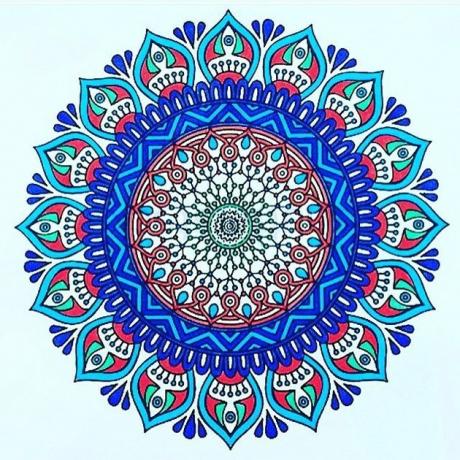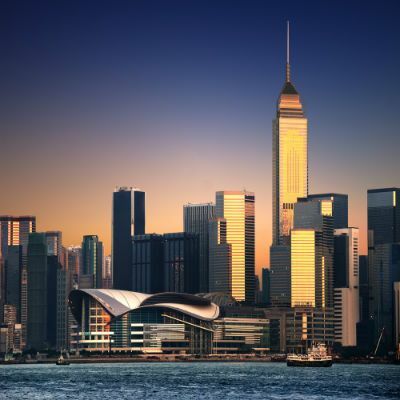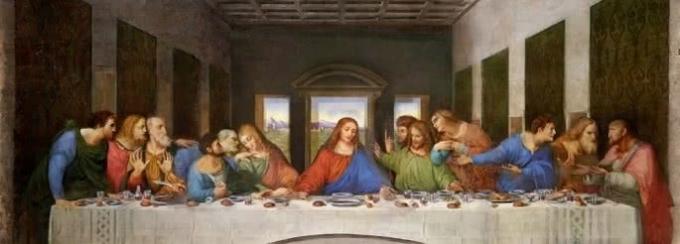Guernica is a work by the Spanish painter and cubist Pablo Picasso. It depicts the bombing of the city of Guernica during the Spanish Civil War (1936-1939).
It is one of the artist's most emblematic works and was produced in 1937. Currently, the canvas is on display at the “Reina Sofia Art Center National Museum” in Madrid, Spain.
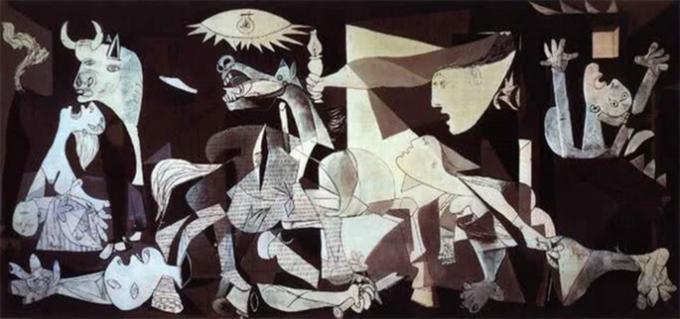
The work carries a strong criticism of German fascism and was created for the Paris International Exhibition. That's because at the time of the event, Pablo Picasso was living in France.
The artist was already working on another work to exhibit at the event. However, the attack on Guernica affected him so much that he decided to change his mind, and thus emerged one of the most iconic works in the history of world art.
Guernica and the Spanish Civil War
The city of Guernica is located in northern Spain, in the Basque country. It was bombed on April 26, 1937, in an air strike by Nazi Germany.
With about 6,000 inhabitants, an estimated 1 660 people died and 890 were injured.
Allied to Nazi-fascist ideas, Spanish General Franco allowed the Nazis to test weapons in the region. That's because the city sheltered some of the Spanish dictator's enemy troops.

Analysis of the work Guernica
Guernica is a large mural measuring 351 cm by 782.5 cm. In it, Picasso used the oil on canvas technique.
Through photos published in newspapers at the time, Picasso came up with the idea of portraying the horror of the city of Guernica when it was bombed by the Germans.
Therefore, the work has a political character, at the same time it pays attention to the destructive power of war.
With notably cubist characteristics (perceivable by the geometric shapes used), the atmosphere created by the artist denotes the horrors of war and its terrible consequences.
In the present figures, we can notice the despair and the screams of horror. On the ground, there is a dead soldier and beside him a woman with an injured leg.
On the left of the frame, a woman screams and cries for the death of her baby. And on the other side, another woman is displayed amidst the flames.
In addition to people, we can see buildings and some animals (bull and horse), both symbols of Spanish culture.
Another important feature is the choice of colors. Picasso produced a monochromatic work by choosing shades of gray, black and white, which makes reference to the documentary character of the photographs that inspired him in the production of the panel.
There are also researchers who attribute monochrome as a reference to the series of engravings War Disasters, by the painter Goya.
The truth is that Picasso was very horrified by the images he saw and decided to portray Guernica at its most fragile moment.
The idea was to show the world the atrocities of war and its saddest consequences.
When a Nazi official asks Picasso if he did the work, he replies: "no it was you".
Details of the Guernica work
To better analyze each part of this important work of art, we selected some areas of painting that will be discussed below. Check out.
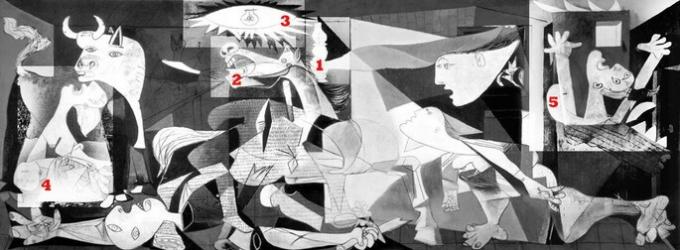
1. the candle
The candle that appears right in the center of the composition represents a small flame of hope in the face of all the despair of war.
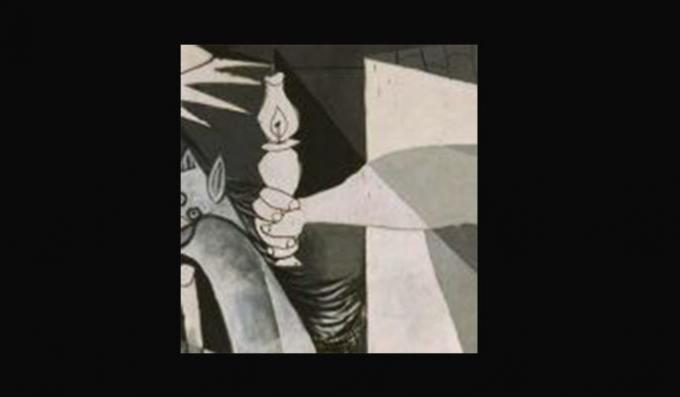
As in other works by Picasso, this "lonely light" can be a symbol of an expectation and belief that better days will come.
2. The horse
The horse has a huge open mouth with bared teeth and a sharp tongue.

This element brings the representation of pain on an even higher level than human pain, it is like a wild and visceral scream.
Here, the animal reproduces the same agony as the woman with the child in her arms.
3. the chandelier
The chandelier at the top of the painting displays triangular rays and eye shape.

It can be understood as a great divine eye that observes the scene and also brings references to the solar figure.
It is understandable that this artificial light appears in the indoor environment in which the situation occurs.
4. pieta
The mother who holds her dead child in her arms carries all the maternal pain and suffering, alluding to the famous biblical scene of Mary with lifeless Jesus in her lap.

The woman's misshapen and torn features, with her mouth wide open, draw a parallel with the horse, which also shows teeth and howls in distress.
5. person on fire
The photographs of the war that inspired Picasso to produce this work feature fire scenes. The artist reproduced this reality through the flames that come out through the windows in this area of the painting.
The man shown here has his arms raised in despair.
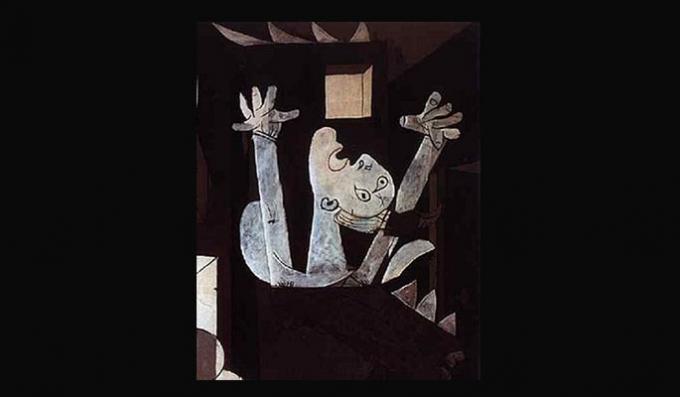
This element can also be related to a work by Goya, called "The executions of May 3", in which a man opens his arms in front of a firing squad.
Guernica video
Check out a video that contextualizes the historical moment, explaining the production of the incredible panel Guernica and why this work is considered a "symbol of peace".
Don't stop here, to complement your studies, read also:
- Modern Art
- European vanguards

